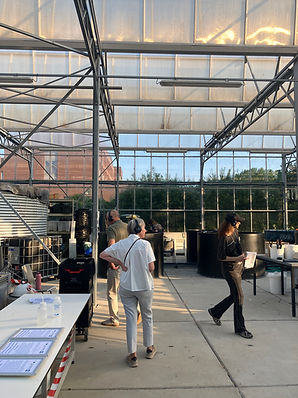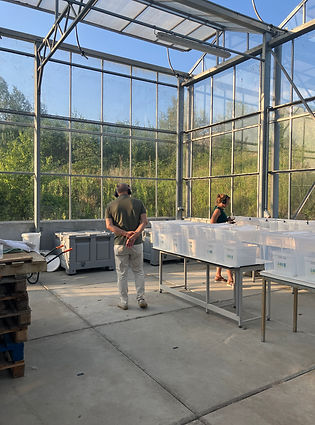



Pantha Rhei on the Rhine
Listening Sessions:
15.05.25 - V2 Rotterdam (NL)
18.05.25 - Rehmann Museum Aargau
19.06.25 - Ecosphere Lab, University of Antwerpen (BE)
https://pantharhei.com/
“Pantha Rhei on the Rhine” is an artistic and scientific research project conceived of and organized by Studio Haseeb Ahmed with the support of Pro Helvetia. Through commissioned narrative sound works presented along the Rhine, the project explores the river’s industrial, ecological, and cultural entanglements through a techno-poetic lens.
Rooted in Heraclitus’ dictum “everything flows,” Pantha Rhei on the Rhine is a transdisciplinary project uniting an international consortium of artistic and scientific partners. Artist Pablo Diserens addresses the headwaters of the Rhine through is collaboration with Rock Ptarmigans, a relic living in alpine glaciers that feed the Rhine. Diana Duta leads us into a murky middle where siren’s songs call us to Lorelei, a treacherous bend in the middle-Rhine and subject poetry and myth which she incorporates. Flurina Mia Häberli uses the noise pollution that inundates the Rhine as we approach the Port of Rotterdam before evacuating into the Atlantic Ocean to ask what an acoustic environment with more considered ecology would sound like to all creatures that inhabit it.
This project is supported by Synergies grant from Pro Helvetia, Swiss Art Council. Each of our partnering institutions host listening sessions of all three radio plays; Rehmann Museum, in Laufenberg, Switzerland is located along the headwaters of the Rhine, the University of Antwerp’s Mesodrome, Belgium is one of the world’s largest river simulation facilities and presents the abstracted middle-Rhine, While V2_ Lab for the Unstable Media in Rotterdam, the Netherlands is located within the delta of canals and ports before the Rhine become part of seas.
Pantha Rhei on the Rhine is conceived and organized Haseeb Ahmed. The project marks a shift practice from working with air to water as artistic media, and continues the idea of “artist as convener” of otherwise unlikely disciplinary and social encounters. We ask, how can we read the river to provide new perspectives on urgent ecological questions that major rivers face globally?
